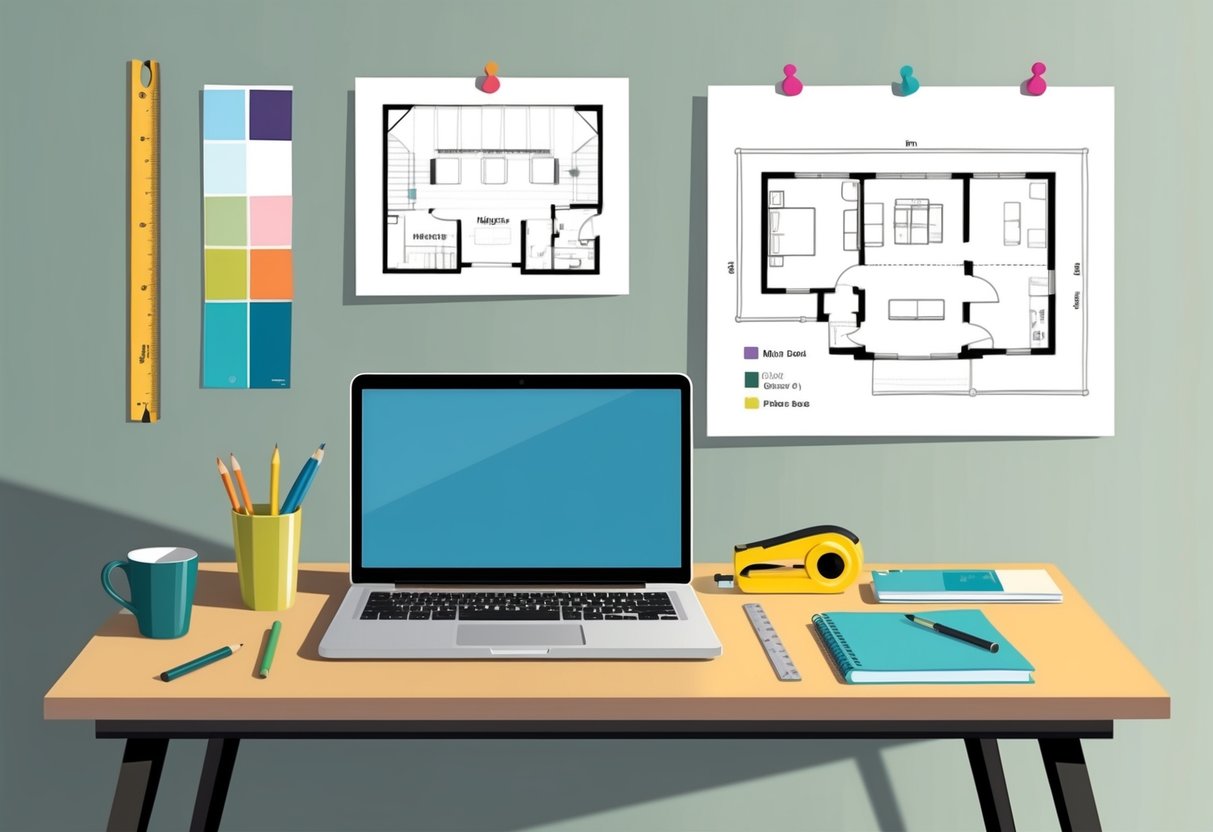
Choosing Finishes for Function and Style
Finishes have a major impact on the atmosphere, utility, and longevity of each room. For high-traffic areas, satin or semi-gloss paints are easier to clean than flat finishes.
When selecting cabinet hardware, brushed nickel and matte black finishes are popular for their ability to hide fingerprints and resist tarnishing. Consider coordinating metal finishes on faucets, door handles, and lighting for a unified look.
Mixing complementary textures—like pairing matte tile with glossy accents—can introduce visual depth without overwhelming a space. Neutral palettes tend to stay in style longer, but bold accents can add personality.
Work with your designer or architect to make sure all chosen finishes align with both your aesthetic goals and daily lifestyle demands. For a stress-free experience, see an essential checklist for selecting materials, colors, and finishes as you plan your home improvement project.
Test samples in the actual space when possible. Lighting, wall color, and surrounding furnishings can alter how finishes appear, so always review materials in context before finalizing your selections.
Hiring a Qualified Contractor
Finding the right contractor ensures quality work throughout a home renovation. Every step, from initial research to final contract terms, shapes the project’s outcome and helps avoid unnecessary complications.
Researching Local Contractors
Homeowners should begin by gathering a list of local contractors with strong reputations in home remodeling. Use online directories, recommendations from neighbors, or local review platforms.
Look for contractors who are licensed, insured, and experienced with projects similar in scope. Visiting company websites helps verify credentials and check years of experience in home renovation.
Cross-reference names on city or state licensing boards to confirm active licenses. Establish communication early and note how quickly and professionally each contractor responds.
Many guides suggest using a structured approach when screening options, such as building a short list based on customer reviews and project photos. For more details on finding local professionals, see the advice in this step-by-step contractor hiring guide.
Evaluating References and Portfolios
Request at least three references from each contractor and contact them directly. Ask previous clients about their experiences, especially regarding communication, project timelines, and handling of unexpected issues.
Pay close attention to whether contractors delivered quality work as promised. Review portfolios showcasing completed home renovation projects, focusing on those that match your style or project size.
Check before-and-after photos to judge attention to detail and craftsmanship. Some contractors may also offer virtual tours or invite you to visit past projects locally.
Utilizing a standardized set of questions makes it easier to evaluate references, such as:
- Did the contractor finish on time?
- Was the final result as expected?
- How were issues resolved?
For further guidance on verifying project histories and references, refer to this comprehensive contractor vetting checklist.
Contract Negotiation Essentials
A clear, detailed contract is critical to protecting both parties during a home remodeling project. Insist on a written agreement specifying the scope of work, materials, timeline, payment schedule, and change order procedures.
Review the contract for warranty provisions, proof of insurance, and clear dispute resolution policies. Ensure the estimate is itemized so both labor and materials are transparent.
If possible, include benchmarks or milestones for each phase of the renovation. It’s recommended to compare at least three bids before signing any agreement.
This provides a baseline for fair pricing and helps identify contractors who deliver both quality work and reliable project management. For more tips on what to include in your contract, consult this home remodeling contract review checklist.
Planning a Kitchen Remodel
A successful kitchen remodel focuses on strategic design, careful selection of appliances, and maximizing both storage and functionality. Making practical decisions in these areas creates a renovation that improves not only aesthetics, but also workflow and enjoyment in the kitchen space.
Designing the Kitchen Layout
Thoughtful kitchen layout design impacts how efficiently people move around the space. Homeowners should start by measuring the kitchen’s dimensions and analyzing how current layouts affect cooking and cleaning routines.
Common layout styles—such as galley, L-shape, U-shape, and open-concept—offer distinct advantages for different needs and square footage. The placement of the sink, stove, and refrigerator forms the kitchen work triangle, a classic concept recommended for reducing steps between key zones.
Sufficient countertop space on either side of these elements streamlines food prep and clean-up. Selecting high-quality, durable materials for counters, floors, and backsplashes sets the foundation for both style and longevity.
Design choices such as natural stone, quartz, and tile can complement any theme while handling daily use. For more guidance on starting the design process, Interiors by Thomas provides a straightforward step-by-step guide to kitchen layout planning.